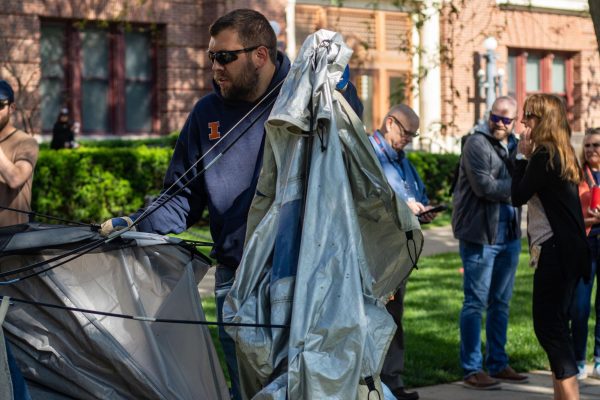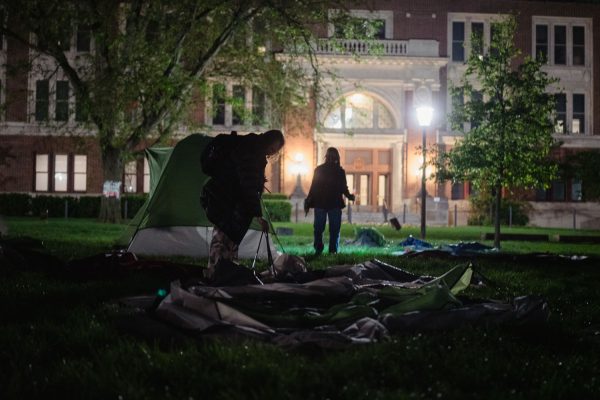Getting a workout without the work
September 3, 2004
Equipped with fins, snorkels and head masks, about 30 women invade the Intramural Physical Education Building twice a week. They are members of the Illinois women’s underwater hockey team.
Underwater hockey is one of the many registered organizations on campus that allow students to exercise and enjoy themselves at the same time.
“It’s a little obscure, true, but it’s easy to learn,” said president Ashley Schneider, junior in LAS.
Schneider joined the organization after hearing about it at Quad Day, but after the first practice, she wasn’t quite sure if it was the sport for her, she said.
But she stuck with it. And, Schneider said, she was glad she did.
Get The Daily Illini in your inbox!
Last year, the team traveled throughout the United States for games against Virginia Tech., Michigan State and several schools in Florida. The team even crossed the border to compete in Canada. Schneider said the women matched up well against their opposition, winning their last tournament.
The team supplies its members with all of the necessary equipment, which includes fins to swim faster, snorkels to improve breathing and a head mask to help the athlete see underwater and avoid injury.
In place of a hockey puck, weighted balls are used. Underwater hockey sticks are just five inches long, compared to the much longer ice hockey sticks.
But, like hockey, athletes receive an aerobic workout from swimming. They notice increased muscle tone and overall fitness improvement, Schneider said.
Outside of the ability to swim, Schneider said, all of the necessary skills can be taught.
Andy Thompson, founder of the University’s Climbing Club, said that previous knowledge wasn’t necessary for rock climbing either, despite the seeming difficulty of the sport. People familiar with climbing know that the ability to climb well is based on various techniques.
Climbing Club members meet Tuesdays to climb at gyms. On weekends, they venture to various locations.
Although the club is open to everyone, the majority of the members are “serious climbers,” Thompson said.
Thompson traveled for nine months in the west to climb. There, he was overwhelmed by the pristine settings of Colorado and the Idaho landscape, he said.
There were also the “mind-blowing” and grueling trails that tested his character, he said.
But Thompson is not even the most accomplished member of the group. Members have climbed in Argentina, Peru and Thailand.
“Each climb gives you a different appreciation and respect for climbing,” Thompson said.
Climbers also develop a sense of community as they tell tales of their latest climbing adventures. A sense of ownership and leadership propels many of the club’s senior members into serving as mentors for climbers who are just starting out, Thompson said.
Contrary to popular belief, rock climbers do not need to have an incredible amount of upper-body strength, Thompson said.
Instead, climbing gives participants an opportunity to build muscle and develop a strong core from carrying their packs. Most climbers also practice yoga. The most significant improvement in overall health, though, can be seen in the increased confidence and mental fortitude that climbers experience, Thompson said.
“We’re all about the real outdoor adventure,” he said.






